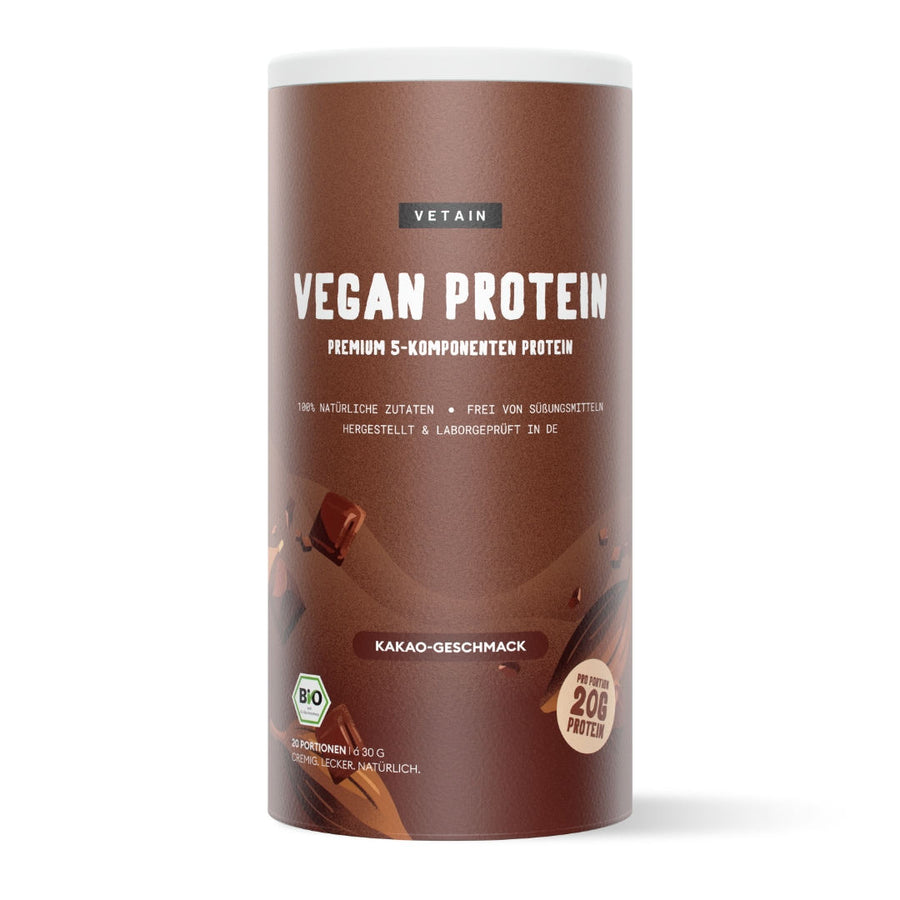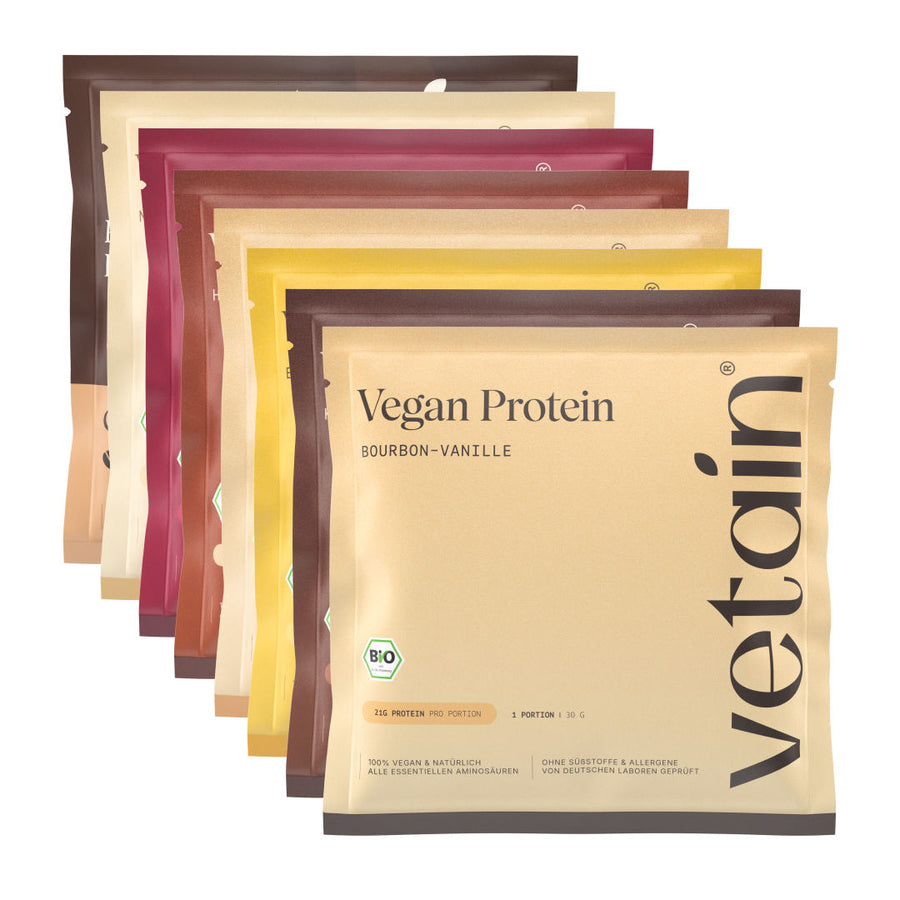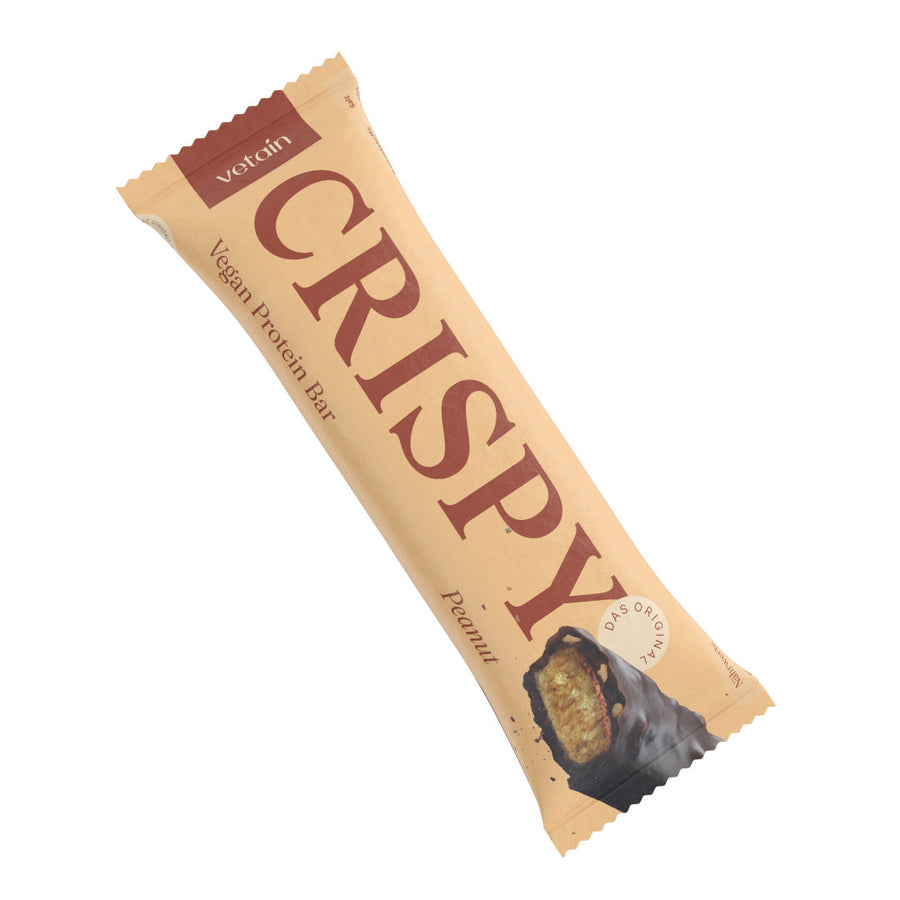Proteins. THE nutrient of today. A few years ago, it was mainly athletes who drank protein shakes and ate protein bars, but nowadays many others also pay attention to their protein intake. Meeting your protein needs in everyday life is not always easy. That’s why the question often arises: What is high in protein?.
That’s exactly what this article is about: I’ll explain which foods are high in protein, how much protein we really need, and why proteins are so important in the first place.
Your knowledge to go: What is high in protein?
A distinction is made between animal (e.g., meat and dairy products) and plant-based protein sources (e.g., legumes and nuts)
Especially with vegetarian and vegan protein sources, it’s important to combine different protein sources to obtain a complete amino acid profile.
Protein powders and high-protein products can help you meet your protein requirements.
Let’s get started: What is high in protein?
Okay, you’re right. It makes more sense if we start with the basics:
Your protein needs
Let’s take a look at how much protein per day you actually need. Right up front: this question is far more complex than you might think. We therefore wrote two dedicated articles where you’ll find everything that matters:
In short: protein requirements are individual and depend on many factors such as body weight, age, or activity level. For the general population, a recommendation of 0.8 g protein per kg body weight applies. For other groups such as physically active people (1.2–2 g) or older adults (1 g), different values apply. Protein needs are also increased during pregnancy and breastfeeding.
Why are proteins important?
Why should we even think about what is high in protein? Why are proteins so in focus?
Proteins are incredibly versatile nutrients and the current hype is absolutely deserved! Proteins are little all-rounders and essential for our entire body.
Basically, along with carbohydrates and fats, proteins are one of the macronutrients. Proteins provide us with energy and supply crucial building blocks for our body: amino acids.
In the body, proteins—or rather amino acids—are involved in many processes:
Energy metabolism
Hormonal balance
Bone and muscle metabolism
Immune system
…
It is therefore very important to consume enough protein to supply the body with essential amino acids and thus contribute to a balanced diet. According to professional associations, long-term insufficient protein intake can lead to limitations in everyday life—e.g., reduced performance or increased fatigue. We don’t want that! So make sure you get enough protein and generally follow a protein-rich diet.
So, how do we approach it? What is high in protein?
What is high in protein – the best protein sources
When asking what is high in protein, we distinguish between animal and plant-based protein sources.
To cut short the already looming discussion about which is “better”: it’s individual for everyone. Depending on your values, diet, and preferences, either plant-based or animal proteins—or a wild mix—can be the right choice for you. You’ll find a detailed look in our article “Animal vs. vegetable protein: which is better?”.
Now let’s first look at various high-protein foods.
What is high in protein – an overview.
Animal protein sources
When people think about protein and wonder what is high in protein, “meat and eggs” often come to mind. And not without reason—these foods really do contain a lot of protein!
Here’s a brief overview of some protein-rich animal foods:
|
Table: What is high in protein? Animal version |
|
|---|---|
|
Food |
Protein per 100 g |
|
Meat (raw) |
|
|
Poultry (skinless) |
22.9 g |
|
Beef |
21.4 g |
|
Pork |
21.4 g |
|
Veal |
21.1 g |
|
Game |
21.1 g |
|
Lamb / mutton |
20.5 g |
|
Liver (average) |
20.3 g |
|
|
|
|
Fish & seafood (raw) |
|
|
Tuna |
23.4 g |
|
Salmon |
19.7 g |
|
Scampi |
19.6 g |
|
Shrimp |
11.4 g |
|
|
|
|
Chicken eggs (raw) |
11.9 g |
|
|
|
|
Dairy products |
|
|
Parmesan |
34.9 g |
|
Emmental (full-fat) |
28.4 g |
|
Camembert (full-fat) |
23.7 g |
|
Brie (full-fat) |
21.4 g |
|
Soft cheese (full-fat) |
20.6 g |
|
Mozzarella |
19.5 g |
|
Feta |
16.7 g |
|
Cottage cheese (low-fat) |
12.4 g |
|
Low-fat quark |
10.6 g |
|
Plain yogurt (low-fat) |
4 g |
|
Buttermilk |
3.4 g |
|
Cow’s milk |
3.2 g |
A few important notes:
Product type (full-fat, low-fat, etc.), preparation, and exact variety affect final protein content.
The table is not exhaustive; there are simply too many products to list. We focused on some of the most protein-dense and commonly used foods.
For most items, protein content refers to the raw product; cooked/fried/baked products will differ.
Don’t be fooled: it’s much easier to drink 100 g of milk than eat 100 g of Parmesan… A high protein per 100 g isn’t everything—always consider typical portion sizes.
Plant-based protein sources
Contrary to what many assume, plant foods can also be very high in protein. A vegetarian or vegan diet can absolutely provide enough protein. No wonder—there are vegan bodybuilders! They’re living proof.
Legumes in particular stand out with protein levels comparable to meat. Soy is one of the best-known legumes and therefore gets its own section in our table.
So: What is high in protein in the plant world?
|
Table: What is high in protein? Plant-based version |
|
|---|---|
|
Food |
Protein per 100 g |
|
Legumes (dried) |
|
|
Lentils |
23 g |
|
Green peas |
21.3 g |
|
Beans (average) |
20.9 g |
|
Chickpeas |
18.6 g |
|
|
|
|
Soy |
|
|
Soybeans (dried) |
38.2 g |
|
Tofu (firm, plain) |
15.3 g |
|
Soybean sprouts (raw) |
5.5 g |
|
Soy yogurt (plain) |
4 g |
|
Soy drink (plain) |
3.9 g |
|
|
|
|
Grains & pseudocereals (raw) |
|
|
Wheat germ |
29.2 g |
|
Oat bran |
18.5 g |
|
Amaranth |
15.8 g |
|
Quinoa |
14.8 g |
|
Rolled oats |
13.5 g |
|
Pasta (varies by type) |
13 g |
|
Flour (average) |
12.4 g |
|
Couscous |
11 g |
|
Cereal flakes (average) |
10.8 g |
|
Buckwheat |
9.8 g |
|
Cornmeal |
8.8 g |
|
Rice |
7.5 g |
|
|
|
|
Nuts, seeds & kernels |
|
|
Pine nuts |
37.3 g |
|
Pumpkin seeds |
35.6 g |
|
Hemp seeds |
31 g |
|
Peanuts |
26.1 g |
|
Almonds |
25.6 g |
|
Sunflower seeds |
25.1 g |
|
Pistachios |
23.8 g |
|
Cashews |
21.5 g |
|
Chia seeds |
21.4 g |
|
Flaxseed |
17.9 g |
|
Walnuts |
17 g |
|
|
|
|
Vegetables (raw) |
|
|
Nori seaweed (dried) |
31.5 g |
|
Brussels sprouts |
4 g |
|
Button mushrooms |
3.7 g |
|
Corn |
3.3 g |
|
Broccoli |
3 g |
|
Spinach |
2.7 g |
|
Arugula |
2.6 g |
|
Cabbage vegetables |
2.2 g |
|
Swiss chard |
2.1 g |
|
Potatoes |
2 g |
|
|
|
|
Baked goods |
|
|
Wholegrain rusk |
17.6 g |
|
Wholegrain crispbread |
12 g |
|
Bread (average) |
9.2 g |
A few important notes:
Product type, preparation, and exact variety affect the final protein content.
The table is not exhaustive; we focused on some of the most protein-dense and commonly used foods.
For most items, values refer to raw products; cooked/fried/baked items will differ.
Dried foods are far more concentrated in protein:
sun-dried tomato: 11.3 g / 100 g
fresh tomato: 0.8 g / 100 g
Of course, fruit also contains protein. However, amounts are comparatively small, so we chose not to include fruit in our “What is high in protein” list. You can still make smart choices and opt for more protein-rich fruits such as berries (especially elderberries at 2.5 g) or passion fruit at 2.2 g protein.
One product category is still missing in our overview of “What is high in protein?”. Clearly: protein powders. If they aren’t high in protein—what is? Let’s take a closer look.
Protein powders and high-protein products
Protein powders, protein bars & co. can help you meet your daily protein needs. That said, protein shakes are not a replacement for balanced meals. As a small snack, a quick protein boost, or—exceptionally—as a breakfast substitute when time is tight, protein shakes are great.
Pay attention to the following points:
Quality: preferably organic quality, sensible and high-quality ingredients, high protein content, as clean as possible
Biological value of the protein (more on this below)
Composition: are there other valuable nutrients like fiber, vitamins, or healthy fats?
As you can see, it’s not only about asking “What is high in protein?”—you should always consider the overall product.
%-product_content-%
Choose your proteins smartly
Protein is not just protein. And a product with an extremely high protein content is not automatically better than one with less. Why?
Let’s start with a short explanation: proteins are made up of amino acids. We distinguish between
dispensable (nonessential) amino acids (the body can synthesize them): alanine, arginine, asparagine, aspartic acid, cysteine, glutamine, glutamic acid, glycine, proline, serine, and tyrosine
indispensable (essential) amino acids (the body cannot make enough and they must be obtained from the diet): isoleucine, leucine, lysine, methionine, phenylalanine, threonine, tryptophan, and valine
When we want to meet our protein needs, our goal should be to get enough of all amino acids. How? Through a balanced and varied diet and smart combinations of foods. All foods contain different kinds, ratios, and amounts of amino acids.
Animal foods often already contain all essential amino acids—whereas with plant-based sources you need to be a bit more intentional. Combining different plant proteins can complement each other’s amino acid profiles and get you close to a complete profile.
Example: Grains + legumes (e.g., lentil stew with bread):
Grains: relatively low in lysine, threonine, and tryptophan, but richer in methionine
Legumes: relatively low in methionine, but richer in threonine and tryptophan
Instead of just chasing the highest protein number (à la “What is high in protein?!”), also check the biological value.
No worries—biological value simply describes how efficiently a dietary protein can be converted into body protein. For that, the amino acid profile needs to be strong. We want a profile that’s as complete as possible with a good amino acid ratio to achieve high biological value.
We’ve developed a suitable protein powder just for you. Feel free to try it!
%-split_content-%
Conclusion: What’s high in protein?
So, what’s high in protein? Top contenders are legumes, nuts, seeds & kernels, as well as meat, dairy, and fish. A balanced diet is the best foundation to meet your protein needs. Combine different food groups—like protein-rich vegetables, tofu or meat, and legumes—into a high-protein meal. We also have a great recipe collection with high-protein dishes for you—check it out!
PS: Feel free to take a screenshot of our table above. Next time you’re shopping and ask yourself, “What was high in protein again?” you’ll have the answer at hand.
Literature
Bieler, S. (2021). Schweizer Nährwerttabelle. 3. Auflage. BLV (Bundesamt für Lebensmittelsicherheit und Veterinärwesen).
Deutsche Gesellschaft für Ernährung e. V. (2021). Ausgewählte Fragen und Antworten zu Protein und unentbehrlichen Aminosäuren. https://www.dge.de/fileadmin/dok/
gesunde-ernaehrung/faq/DGE-FAQ
-Protein-2021.pdfHeseker, Prof. Dr, H. & Heseker, B. (2019/2020). Die Nährwerttabelle. 6. Auflage. DGE (deutsche Gesellschaft für Ernährung e.V.)
Do you have any questions? Feel free to send me an email — I’m happy to hear from you! :)
The information shared in this article does not replace individual medical or nutritional advice.




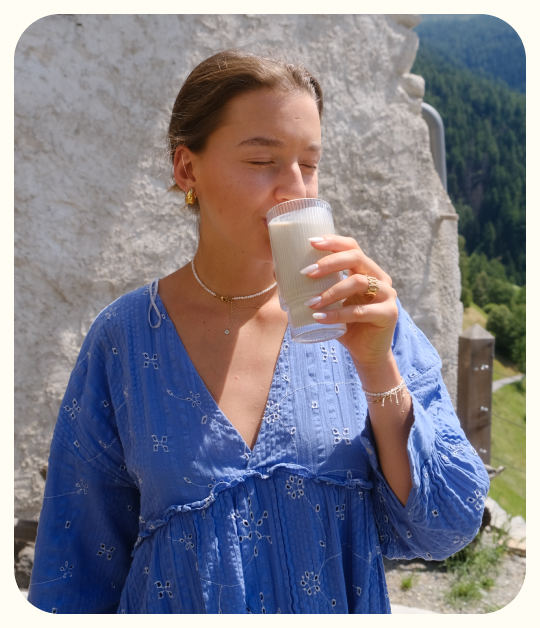
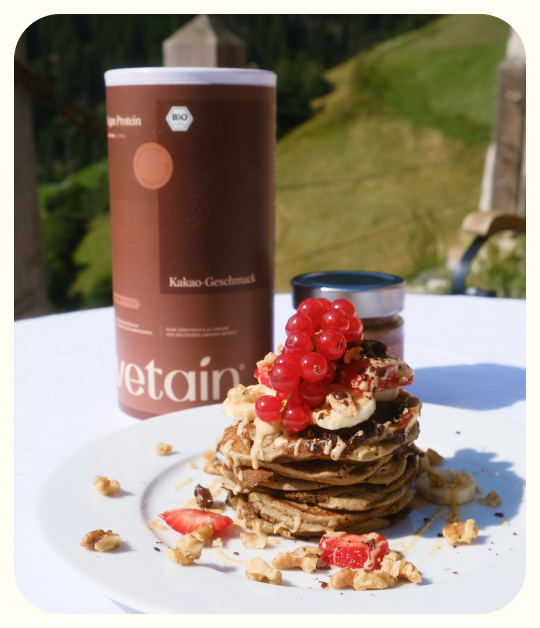


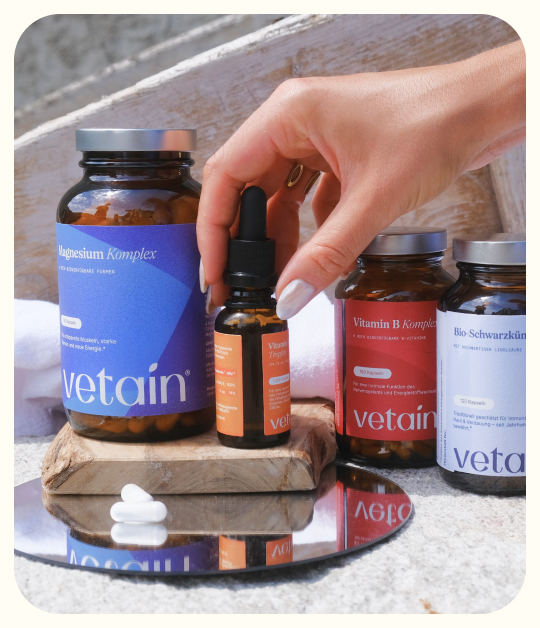






 10 Min
10 Min
 Zuletzt aktualisiert am 30.10.2025
Zuletzt aktualisiert am 30.10.2025

